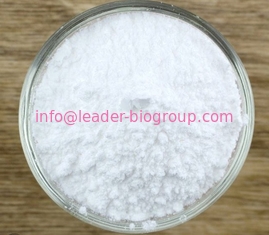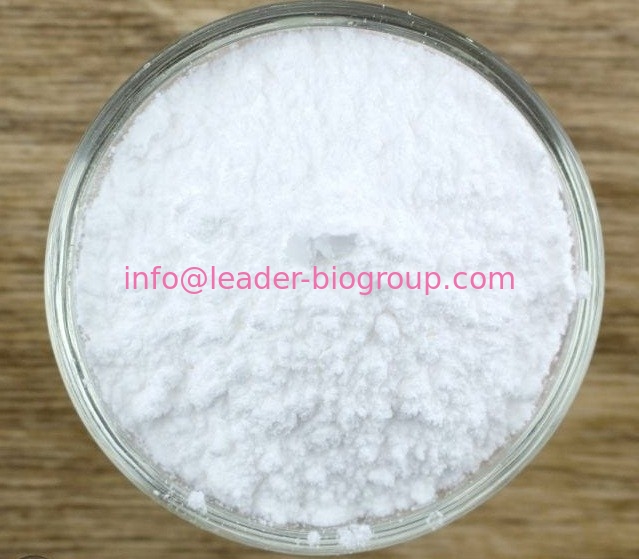| D-Glucose monohydrate Basic information |
| |
| D-Glucose monohydrate Chemical Properties |
| Melting point |
83°C |
| density |
1.54 |
| solubility |
Freely soluble in water, sparingly soluble in ethanol (96 per cent). |
| form |
Solid |
| color |
Colorless crystals |
| Odor |
Odorless |
| PH Range |
5.9 |
| Water Solubility |
1 g/1.1 ml water @ 250C |
| CAS DataBase Reference |
5996-10-1(CAS DataBase Reference) |
| |
| D-Glucose monohydrate Usage And Synthesis |
| Chemical Properties |
D-Glucose monohydrate is white or almost white, crystalline powder. |
| Chemical Properties |
Dextrose occurs as odorless, sweet-tasting, colorless crystals or as a white crystalline or granular powder. The JP XV describes dextrose as dextrose anhydrous; the PhEur 6.3 specifies dextrose as either dextrose anhydrous or dextrose monohydrate; and the USP 32 specifies dextrose as dextrose monohydrate. |
| Uses |
Replenisher (fluid and nutrient). |
| Production Methods |
Dextrose, a monosaccharide sugar, occurs widely in plants and is manufactured on a large scale by the acid or enzymatic hydrolysis of starch, usually maize (corn) starch. Below 50°C a-D-dextrose monohydrate is the stable crystalline form produced; above 50°C the anhydrous form is obtained; and at still higher temperatures b-D-dextrose is formed, which has a melting point of 148–155°C. |
| Definition |
A monosaccharide occurring widely in nature as D-glucose. It occurs as glucose units in sucrose, starch, and cellulose. It is important to metabolism because it participates in energy-storage and energy-release systems. |
| Brand name |
Cartose (Sterling Winthrop) Dextrose. |
| Agricultural Uses |
Glucose is a monosaccharide sugar found in honey and fruits. It is the primary product of plant photosynthesis, which is optically active and dextrorotatory.
Glucose and its derivatives are critically important in the energy metabolism of living organisms. It is transported around the animal body through blood, and by lymph and cerebrospinal fluid, to cells where the energy is released during glycolysis.
Fructose, the stereoisomer of glucose, occurs in green plants, fruits and honey. It is sweeter than sucrose.
Yeasts readily ferment glucose to produce ethyl alcohol and carbon dioxide. It is also metabolized by bacteria into acetic and butyric acids, lactic acid, butyl alcohol, , hydrogen, carbon dioxide and many other compounds.
Plants and animals convert complex carbohydrates (like starch and glycogen) into glucose to meet their energy needs. Glucose is produced commercially by hydrolysing corn starch with dilute mineral acid. Commercial glucose is mostly used in the manufacture of confections and in the canning industry. |
| Pharmaceutical Applications |
Dextrose is widely used in solutions to adjust tonicity and as a sweetening agent.Dextrose is also used as a wet granulation diluent and binder, primarily in chewable tablets.Although dextrose is comparable as a tablet diluent to lactose, tablets produced with dextrose monohydrate require more lubrication, are less friable, and have a tendency to harden. The mildly reducing properties of dextrose may be used when tableting to improve the stability of active materials that are sensitive to oxidation.
Dextrose is also used therapeutically and is the preferred source of carbohydrate in parenteral nutrition regimens. |
| Safety |
D-Glucose monohydrate is rapidly absorbed from the gastrointestinal tract. It is metabolized to carbondioxide and water with therelease ofenergy.
Concentrated D-Glucose monohydrate solutions given by mouth may cause nausea and vomiting. D-Glucose monohydrate solutions of concentration greater than 5% w/v are hyperosmotic and are liable to cause local vein irritation following intravenous administration. Thrombophlebitis has been observed following the intravenous infusion of isoosmotic D-Glucose monohydrate solution with low pH, probably owing to the presence of degradation products formed by overheating during sterilization. The incidence of phlebitis may be reduced by adding sufficient sodium bicarbonate to raise the pH of the infusion above pH 7.
LD50 (mouse, IV): 9g/kg
LD50 (rat, oral): 25.8g/kg |
| storage |
D-Glucose monohydrate has good stability under dry storage conditions. Aqueous solutions may be sterilized by autoclaving. However, excessive heating can cause a reduction in pH and caramelization of solutions.
Thebulkmaterialshouldbestoredinawell-closedcontainerina cool, dry place. |
| Incompatibilities |
Dextrose solutions are incompatible with a number of drugs such as cyanocobalamin, kanamycin sulfate, novobiocin sodium, and warfarin sodium. Erythromycin gluceptate isunstable indextrose solutions at a pH less than 5.05. Decomposition of B-complex vitamins may occur if they are warmed with dextrose.
In the aldehyde form, dextrose can react with amines, amides, amino acids, peptides, and proteins. Brown coloration and decomposition occur with strong alkalis.
Dextrose may cause browning of tablets containing amines (Maillard reaction). |
| Regulatory Status |
Included in the FDA Inactive Ingredients Database (capsules; inhalations; IM, IV, and SC injections; tablets, oral solutions, and syrups). Included in nonparenteral and parenteral medicines licensed in the UK. Included in the Canadian List of Acceptable Non-medicinal Ingredients. |
|
|

